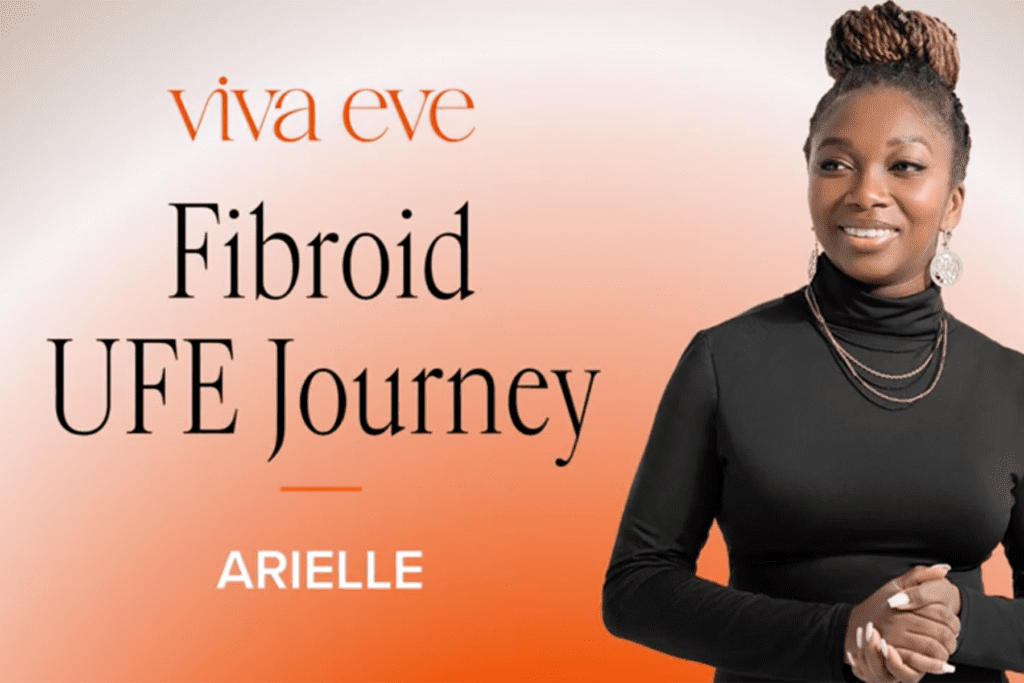What is UFE?
Uterine Fibroid Embolization (UFE) is a minimally invasive, nonsurgical procedure for the treatment of fibroids and adenomyosis that has been performed successfully for over two decades. It is an effective alternative to surgery and hormonal treatment, and those wishing to avoid a hysterectomy should discuss this option with their doctor.
The procedure itself is performed by an interventional radiologist who uses real time x-ray imaging to guide the delivery of tiny particles to the uterine artery supplying the fibroids with blood. The procedure involves creating a tiny incision in the artery that is located in the upper thigh or wrist, through which a very thin catheter is inserted and makes its way to the uterine artery. The particles are carefully delivered in order to reduce blood flow to the fibroids, leaving the rest of the uterus untouched. Fibroids shrink gradually over the next weeks and months.
Learn more about UFE below and why most of our patients choose this treatment option.
0%
of UFE cases lead to a significant improvement in quality of life.
0
successful UFE procedures performed annually in the U.S.
0%
of UFE cases lead to major complications.
Common Symptoms
UFE is a first-line therapy used to treat the symptoms of fibroids and adenomyosis. Research has shown that nearly 90% of women who undergo UFE experience significant or total resolution of their fibroid symptoms, such as heavy bleeding, pain, and pressure.
Benefits & Risks
There are many advantages to this minimally invasive treatment. It is a same-day outpatient procedure that offers a high success rate, few complications, and a short recovery time. For women looking to preserve their uterus and fertility, UFE does not require invasive surgery and leaves the uterus untouched. Benefits include:
Benefits
- Lower complication rates than conventional surgical fibroid treatments — for example, from infection or injury to the uterus
- Much shorter recovery time — a few days to a week, compared to weeks for conventional surgery
- A uterus that is left intact — compared to the removal with a hysterectomy
- Recurrence of UFE-treated fibroids is lower than with myomectomy.
- No surgical incision needed, only a small nick in the skin that doesn’t need stitches
- General anesthesia isn’t required – we use only moderate sedation
- Fibroids rarely grow back afterward
- No overnight stay is needed
- Works on multiple fibroids at the same time
Risks
- Short-term allergic reaction or rash (treated with topical or oral allergy medications, typically sold over-the-counter)
- Temporary absence of a menstrual period (in a vast majority of cases women start getting their period very soon after the procedure, but some patients do report that they missed 1 or 2 periods following UFE)
- Vaginal discharge or infection (extremely rare and very easily treated with antibiotics)
- Post-embolization syndrome, with patients complaining of a fever, some pain, and fatigue following the procedure. Might require prescription medication
- Non-target embolization (extremely rare if performed correctly by a trained physician)
- Premature menopause – rare and if it occurs, it is most likely to occur in patients over 45 who are near to menopause
Steps to Care
STEP 01
Consultation
Either your doctor or a Viva Eve physician can determine whether you’re a good candidate for a for a UFE procedure. The consultation process includes an initial consultation, some testing and imaging, a review of your test results, and a final pre-operative consultation with the specialist doctor who will perform your UFE so that you and the doctor can decide together whether a UFE is right for you.
STEP 02
Preparation
Let your fibroid specialist know if there’s any chance you could be pregnant. Provide a list of all medications you’re on, including supplements. You may be asked to discontinue taking any medications that could interfere with your blood’s ability to clot, such as aspirin, Coumadin or ibuprofen.
You’re asked not to drink or eat anything for several hours before the procedure. Check with fibroids clinic about whether you need to discontinue any other medications you’re on. It is mandatory to have a person over 18 to accompany you home after procedure.
STEP 03
Procedure
You’re put under conscious sedation, which means you’re relaxed and sleepy, but conscious. A local anesthetic numbs your groin area. Your uterine specialist makes a small incision and inserts a tiny catheter into the fibroid’s blood supply. You may feel some pressure, but you shouldn’t feel pain.
A substance is injected that cuts off the blood supply to each fibroid, which causes it to shrink in size and die. The procedure takes approximately 60 to 90 minutes. You need to lay flat for several hours after the procedure and stay in the hospital overnight, but you should be able to go home the next day.
STEP 04
Recovery
While at the Viva Eve facility, the post-procedure care is provided by skilled nurses and your interventional radiologist. During the recovery you may experience some discomfort, similar to menstrual cramps. You and your Viva Eve doctor will determine what medications may be needed to keep you comfortable (in most cases, over-the-counter medication is enough).
Our doctors will personally call you to follow up for the first 2 days post-procedure. During the call we will discuss any questions you might have and help make sure you are on the right track with everything. Most woman are able to return to light activity within a few days after the UFE treatment and are usually back to work and to normal activity within a week.
As the fibroids shrink over several months, most women report significant improvement in the way they feel good around their third period cycle post-procedure, though many experience symptom relief sooner. You will also receive calls from us 1 week, 30 days and 90 days after the procedure.
Arielle’s Fibroid UFE Journey

Arielle Hill is our first Viva Eve Village Patient Ambassador!
An Alabama-native, Arielle moved to New York City in 2013 to pursue her dreams of being a singer. She had always struggled with painful periods and heavy bleeding, but managed life around her cycles – until new symptoms popped up. Here is her story – and what she advises other women to do who are in the same position.
